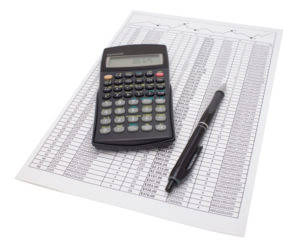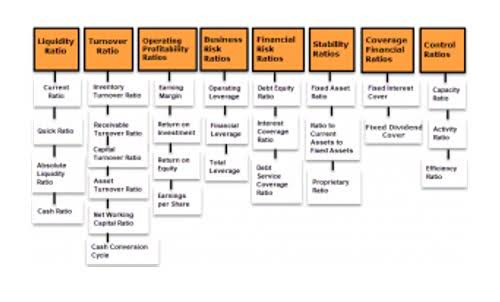Variable Cost: Definition, Formula, and Examples
Below, we discuss what variable costs are, why they’re important, and how you can calculate them. Beyond a certain point, the cost per unit may increase due to the diminishing returns of adding more resources or the need for more expensive equipment to handle the increased volume. Otherwise, the company must adjust its business model (e.g. increase pricing) because its profit margins will inevitably compress, which is not sustainable over the long run. The longer your production facility is actively operating, the more power and water it’s likely to use. Utilities are a variable cost because they usually increase and decrease alongside your production. For instance, airlines have high fixed costs, such as paying for their aircraft.
How to reduce variable costs

The Average Variable Cost (AVC) is the variable cost per unit incurred by a business across a given period. Do you still have questions about variable costs and how they affect your business profitability? Of course, you don’t want to charge too much and risk losing business to better-priced competition. Using the variable cost formula will help you find the sweet spot between charging too much and too little, ensuring profitability for your business. Based on our variable costing method, the special order should be accepted.
How much are you saving for retirement each month?

Kevin is currently the Head of Execution and a Vice President at Ion Pacific, a merchant bank and asset manager based Hong Kong that invests in the technology sector globally. Prior to joining Ion Pacific, Kevin was a Vice President at Accordion Partners, a consulting firm that works with management teams at portfolio companies of leading private equity firms. There are various methods and tools for implementing lean manufacturing into your business, and it’s worth investigating which ones can most benefit your existing workflows. Costs related to ensuring that products meet quality standards and specifications.
- However, by analyzing historical data and trends, businesses can create accurate budgets for variable costs.
- Operating leverage is the degree to which fixed costs are used in the production process.
- This can help businesses create accurate budgets for variable costs and ensure that they are not overspending.
- The concept of operating leverage is defined as the proportion of a company’s total cost structure comprised of fixed costs.
- Variable costing poorly upholds the matching principle, as related expenses are not recognized in the same period as related revenue.
- This process takes time, labor, materials, and essential production equipment.
- By calculating the break-even point, businesses can determine how many units they need to sell in order to cover their costs and start making a profit.
How Do Fixed Costs Differ From Variable Costs?

However, businesses need to be careful not to set prices too high, as this could lead to decreased demand and ultimately lower profits. In conclusion, understanding the factors that affect variable costs is crucial to accurately calculate costs and make informed decisions. By managing production volume, price per item formula taking advantage of economies of scale, and efficiently managing direct labor and materials, businesses can reduce variable costs and improve profitability. Variable costs can include labor, materials, commissions, utilities, and other expenses that are directly related to the production process.
What Is the Difference Between a Variable Cost and a Fixed Cost?
Businesses should analyze their expense structure to determine which costs are variable and which costs are fixed. This can help businesses create accurate budgets for variable costs and ensure that they are not overspending. Quantifying the average variable cost, assuming the average fixed cost was determined beforehand, is enough to estimate a company’s break-even point (BEP). Variable costs can add a layer of unpredictability to running your business.
To Ensure One Vote Per Person, Please Include the Following Info
- Costs related to ensuring that products meet quality standards and specifications.
- Regardless, understanding variable and fixed costs for your business is the most important piece of running a successful business.
- That’s good news if your business is really starting to pick up, but you’re still finding it difficult to pay the bills.
- For example, if you have 10 units of Product A at a variable cost of $60/unit, and 15 units of Product B at a variable cost of $30/unit, you have two different variable costs — $60 and $30.
- In accordance with the accounting standards for external financial reporting, the cost of inventory must include all costs used to prepare the inventory for its intended use.
- It allows management to evaluate the efficiency of production processes, identify cost-saving opportunities, and implement strategies to improve profitability.
Implement energy-saving measures to reduce utility costs and environmental impact. Optimising the layout of the production facility can streamline workflows, minimise material handling, and reduce production cycle times. Overhead expenses related to the general management and administration of the business. With that said, the cost structure concept is industry-specific, so companies operating in different industries cannot always be compared to each other. Our mission is to empower readers with the most factual and reliable financial information possible to help them make informed decisions for their individual needs.

On the other hand, fixed manufacturing costs, such as leases, compensations of permanent workers, and machinery depreciation, are not allocated to products in variable costing. Instead, they are recognized as fixed costs and are subtracted from total income to determine the operating income for the period. Unlike absorption costing, which combines variable and fixed manufacturing costs when deciding the cost of goods sold (COGS), variable costing considers variable costs as a portion of COGS. Fixed manufacturing costs are treated as period costs and are not allocated to individual units of production.
Total Variable Cost vs. Average Variable Cost

Tracking variable costs is useful for managers who want to document where company money goes, and also is useful for calculating break-even sales volume and for evaluating pricing levels. Break-even sales volume is the number of units a firm must sell to exactly cover total operating costs. Subtract the variable cost per unit of $15 from the $40 price, leaving $25. Divide fixed costs by $25 and you have a breakeven sales volume of 28,000 units. If the company doesn’t expect to sell enough additional units to provide an adequate profit, management will want to re-evaluate the pricing strategy, company sales goals or both. Variable costs are defined as the expenses incurred to create or deliver each unit of output.
How are Variable Costs calculated?
Austin specializes in the health industry but supports clients across multiple industries. This means consolidating purchases with fewer suppliers to leverage volume discounts and establish better relationships with your vendors. Try to negotiate long-term contracts to increase pricing stability and predictability. Perform energy audits, wherein the energy consumption of your production processes is assessed to identify areas for efficiency improvements.
Variable vs Fixed Costs in Decision-Making
Let’s assume that it costs a bakery $15 to make a cake—$5 for raw materials such as sugar, milk, and flour, and $10 for the direct labor involved in making one cake. The table below shows how the variable costs change as the number of cakes baked varies. Variable and fixed costs play into the degree of operating leverage a company has. In short, fixed costs are more risky, generate a greater degree of leverage, and leave the company with greater upside potential.


